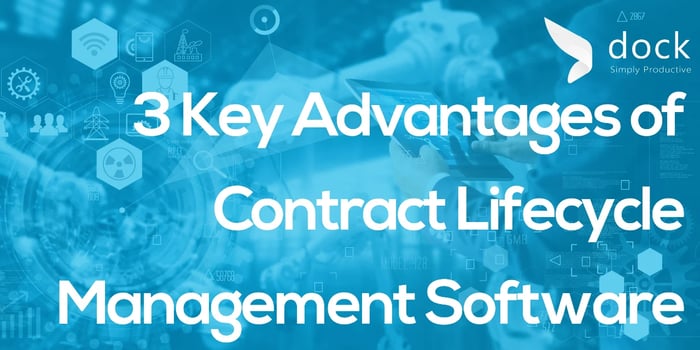
3 Key Advantages of Contract Lifecycle Management Software

Contracts are the foundation of any business relationship. They articulate expectations, outline obligations, and establish accountability between organizations and their partners, vendors, clients, and employees. The manual management of contracts, which is spread across shared drives, emails, spreadsheets, or physical folders, in most cases, causes confusion, delay, waste of time, and avoidable risks.
This is where the power of Contract Lifecycle Management software comes in. CLM software, therefore, provides an automated workflow throughout a contract's entire life cycle-from request and drafting to approval, negotiation, execution, renewal, and reporting. A centralized and automated system allows organizations to better their visibility, security, and control throughout each stage of the contracting process.
But why does CLM deliver such strong business value? And is it the right fit for your organization?
In this article, we explore three key advantages of adopting CLM software-and how it helps organizations in enhancing efficiency, reducing risks, and strengthening contract outcomes.
1. A Single, Organized, and Searchable Repository for All Contracts
One of the biggest challenges for many organizations is knowing where their contracts actually are. Too many businesses are storing agreements in filing cabinets, inboxes, local folders, or across multiple shared drives. This scattered approach creates:
- Difficulty in finding contracts faster
- Circulation of duplicate or outdated versions
- Inconsistent access permissions
- Important information buried in documents
When contracts are not readily available, decision-making slows down. Negotiations get stuck. Compliance becomes harder to maintain, and in times of dispute, lack of clarity leads to costly consequences.
How CLM Software Solves This Problem
A Contract Lifecycle Management system centralizes all agreements in a single digital contract repository. With this unified storage system, it becomes very easy for any authorized user to search, retrieve, and review any contract at any time, irrespective of their locations.
In CLM, organizations benefit from features such as:
- Advanced Search Tools: Find contracts in an instant through keywords, filters, tags, or metadata.
- Version Control: Ensure that everyone works from an updated document.
- Customizable Access Permissions: Configure who can view, edit, or approve contracts.
- Cloud-Based Accessibility: Access documents securely from any device.
Through digitization, the contracts have left their archaic filing systems and fragmented spreadsheets in the background. Now, there is less search time, no storage inefficiencies, and full visibility into contract status and content.
Why Easy Contract Retrieval Matters
Business performance is outlined by the contract terms, deadlines, and obligations. When employees can quickly access contract details, they are able to:
- Clarify responsibilities and expectations
- Confirm pricing, timelines, or renewal terms
- Prevent disputes before they occur
- Respond faster during audits or legal reviews
More than convenience, centralization directly impinges on profitability and operational agility.
CLM software gives teams a smooth environment in which to collaborate, supported by unified data and consistent workflows that drive stronger decision-making with fewer misunderstandings and better long-term contract outcomes.
2. Stronger Contract Security and Risk Protection
Every contract holds sensitive and confidential information, including financial details, business terms, client data, intellectual property, and much more. The inconsistent storage or sharing of such data contributes to an enhanced possibility of a breach.
Cybersecurity threats keep emerging, and organizations have to take contract security seriously. A single breach can bring down customer trust, result in huge legal penalties, or leakage of proprietary information.
CLM Software Strengthens Security Across the Contract Lifecycle
With a modern CLM solution, the risk mitigation and data protection features are embedded directly into the contracting system to ensure contracts remain secure from the very beginning of their creation to archiving or renewal.
CLM security tools may include:
- Role-Based User Permissions - provide employees with only the contract access that is relevant to their role.
- MFA: Multi-Factor Authentication - Prevent unauthorized access to the platform.
- Audit Trails: Monitor every change, approval, and user action for compliance.
- Encrypted Cloud Storage: Protect data from unauthorized interception or exposure.
- Automated Backup and Recovery: Ensuring that data is never lost or corrupted.
These features offer layered protection, making it significantly difficult for internal or external threats to compromise the data of the contract.
Why Security Matters for Operational Confidence
When employees know that their confidentiality will be protected reliably, they work more confidently and efficiently. Organizations also can reduce:
- Legal liabilities
- Financial penalties
- Operational interruptions
- Reputational damage
In sectors like healthcare, finance, manufacturing, government contracting, and professional services, security is not optional; it's non-negotiable.
By centralizing contract activity in a secure CLM system, an organization takes a proactive, not reactive, approach to risk mitigation.
3. Automated Alerts to Prevent Missed Deadlines and Renewals
Missing critical dates is one of the most common and costly contract mistakes, especially expiration dates, renewal deadlines, and performance obligations.
Without clear alerts and reminders, companies often:
- Accidentally renew contracts they intended to cancel
- Fail to renew contracts they wanted to extend
- Missing fulfillment milestones impacting compliance
- Lose leverage in renegotiation opportunities
These are common mistakes because dates are easy to overlook when tracked manually across spreadsheets, inbox follow-ups, or paper files.
CLM Software Eliminates Missed Contract Deadlines
With automated date tracking, CLM software notifies the right people at the right time, well before critical deadlines occur.
Examples of CLM reminders might include:
- Renewal alerts
- Notice period reminders
- Performance and obligation deadlines
- Milestones in delivery or payment
- Internal workflow approvals
These notifications ensure that no one has to remember every detail on their own; instead, the system proactively organizes and communicates everything.
Automated Alerts: Reaping the Benefits
Automated reminders help organizations to:
- Avoid accidental contract renewals
- Negotiate from a position of strength
- Comply with obligations
- Improve vendor and partner relationships • Plan strategically rather than reactively This shifts contract management from last-minute scrambling to proactive planning, reducing risk while increasing operational clarity.
Conclusion
For this reason, it is no longer possible to manage contracts with scattered files, manual reminders, and fragmented communication. Business relationships are becoming increasingly complex, with timelines accelerating at an unprecedented speed. This means that the systems used to support contract workflows must themselves be efficient, agile, and equally fast. CLM brings order, transparency, and uniformity into what traditionally has been a bottlenecking, error-prone, and vulnerable process.
CLM software ensures that every contract remains easily accessible, searchable, and manageable during its life cycle within one well-organized repository. This level of visibility enables the teams to make well-informed decisions faster, whether responding to inquiries by vendors, reviewing terms, preparing for renewals, or aligning on pricing and compliance obligations.
With a modern CLM platform, an organization inherently gains better security to protect sensitive data in its contracts and ultimately earns the trust of its clients, partners, and internal stakeholders. They replace ad-hoc file permissions and outdated storage methods with centrally managed access controls, encryption, logging, and oversight that minimize internal and external threats. Further, this leads to a more reliable and risk-aware environment for contracting.
But perhaps one of the most transformative benefits of CLM software has to be the automation around contract reminders and deadlines. Too often, companies lose revenue, time, or negotiation leverage because key dates have been overlooked. CLM software makes that risk obsolete by making sure the right person is notified at the right time, letting teams act proactively rather than reactively. Smoother renewals translate into better vendor relations and an overall more fluid operational rhythm.
In other words, deploying a Contract Lifecycle Management solution is not just a technological decision but a strategic investment in operational excellence. It allows organizations to get their contracts under control, eliminate unnecessary delays, improve collaboration, and give business performance an extensive, assured boost. Whether an organization is big or small, the advantages brought about by centralization, security, and automation compound swiftly, ensuring durable enhancement and tangible results across all departments.
Therefore, Dock 365 provides a CLM powered by Microsoft 365 and SharePoint that can enable the simplification of contract management by providing one unified contract repository, automating workflows and reminders, securing access controls, and being easy for users to navigate.
If you are ready to streamline your contract processes and unlock better outcomes, now is the time to make the switch.
Book a Live demo
Schedule a live demo of Dock 365's Contract Management Software instantly.

Written by Lindsey Paulk
Lindsey Paulk is a Content Writer in Jacksonville, Florida that specializes in digitally communicating all-things contract management.




